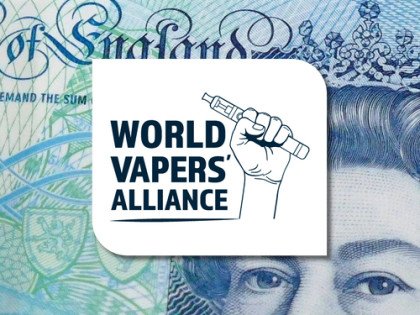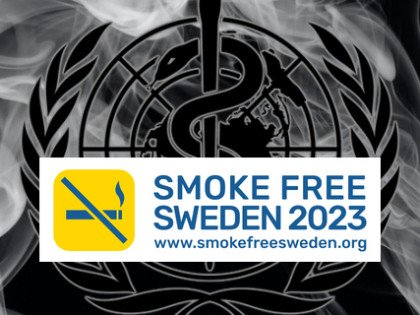The authors included: David Abrams, Scott Ballin, Clive Bates, Neal Benowitz, Michael Cummings, Cliff Douglas, Jonathan Foulds, Tom Glynn, Martin Jarvis, Lynn Kozlowski, David Levy, David Mendez, Robn Mermelstein, Rafael Meza, Tom Miller, Ethan Nadelmann, Ray Niaura, Vaughn Rees, Steve Schroeder, David Sweanor, Jamie Tam, Kenneth Warner, and Daniel Wikler.
They write:
“We are academics and experts with many years of experience in tobacco and nicotine science and policy. We are writing to comment on the Reagan-Udall Foundation evaluation of the Food and Drug Administration’s (FDA) tobacco program, and very much welcome the constructive response from the Director of the Center for Tobacco Products, Dr. Brian King. We summarize our points in this letter and expand on our proposed approach in the attached briefing.
In the 2023 State of the Union fact sheet on the Cancer Moonshot, the President committed to tackling cancer and prioritized smoking as its most avoidable cause. This mission and focus align well with the vision of the Center for Tobacco Products and should unite all parties with a sincere interest in achieving tangible public health outcomes.
To support the President’s agenda, we suggest that FDA shape its tobacco program around four interdependent regulatory pillars to reduce smoking as deeply and rapidly as possible.
- To degrade the attractiveness and addictiveness of cigarettes and other combustible tobacco products. FDA should use its powers to control ingredients, addictive agents, emissions, exposures, packaging, warnings, marketing, and retailer behaviors.
- To promote transition pathways to smoke-free status. FDA should authorize a wide range of low-risk nicotine products that will allow smokers low-risk alternatives and an off-ramp from smoking. Using its wider regulatory powers, FDA should promote smoking cessation with better evidence-based treatments.
- To control risks arising from the ongoing use of smoke-free nicotine products. The FDA should use its powers to ensure that non-combustible tobacco products, while not risk-free, are safe enough and have an acceptable risk threshold. It should create a system of standards and soft standards (“comply or justify”) that would expedite the pre-market application process.
- To protect young people from tobacco-related health and welfare risks. FDA should take a holistic view of the interests of young people, especially those at the highest risk from tobacco or substance use, and recognize young people benefit in multiple ways when the adults in their lives quit smoking.
As Reagan-Udall points out, FDA’s approach to tobacco requires careful navigation of trade-offs and unintended consequences arising from its interventions - and that applies to the four-part strategy set out above. These trade-offs should be made explicit and grounded in minimizing disease risks to the extent possible.
In addition, such a strategy should be underpinned by four further supportive actions:
- Education. Undertake a concerted communications effort to better align public perceptions with scientific insight. There are widespread misperceptions about the significant differences in the risks of combustible and non-combustible products and public misunderstandings about the role of nicotine in behavior and disease. FDA is well positioned to correct misperceptions about nicotine to accelerate the decline of smoking.
- Efficiency. Make immediate improvements in the efficiency, transparency, predictability, and proportionality of the PMTA process. Process re-engineering will reduce pressure on staff and litigation risks. It means, for example, relying more on standardization, post-market surveillance, and expediting authorization for product updates.
- Enforcement. Build a rational regulatory regime and then enforce it. FDA should combine a more rational, transparent, and risk-proportionate system for authorizing smoke-free products with stricter enforcement action against unauthorized products, rogue marketing practices, and illegal sales to under-21s. A more orderly, well-regulated market will reduce, though not eliminate, the need for enforcement.
- Engagement. Proactively engage stakeholders. FDA should be open to a wide range of perspectives on these issues and demonstrate a willingness to consult and engage widely, including through the Tobacco Products Scientific Advisory Committee (TPSAC). FDA could publish or sponsor objective scientific assessments and help build consensus towards a common base of knowledge.
We hope you will take our views as a positive contribution to the further development of the FDA as an effective regulator of tobacco and nicotine products. We would also like to engage in constructive dialogue. To that end, we would welcome the opportunity to meet with relevant FDA leadership and discuss these matters.”
Photo Credit:
Photo by Debby Hudson on Unsplash
Dave Cross
Journalist at POTVDave is a freelance writer; with articles on music, motorbikes, football, pop-science, vaping and tobacco harm reduction in Sounds, Melody Maker, UBG, AWoL, Bike, When Saturday Comes, Vape News Magazine, and syndicated across the Johnston Press group. He was published in an anthology of “Greatest Football Writing”, but still believes this was a mistake. Dave contributes sketches to comedy shows and used to co-host a radio sketch show. He’s worked with numerous start-ups to develop content for their websites.
Join the discussion
Harm Reduction For The Rich
The United Kingdom risks becoming a harm reduction country only for the wealthy, according to Michael Landl of the World Vapers’ Alliance
CAPHRA Highlights Tobacco Control Flaws
The Coalition of Asia Pacific Tobacco Harm Reduction Advocates highlights the flaws in tobacco control which has led to the rise of black market in Australia
A Missed Opportunity at COP10
The Smoke Free Sweden movement says that COP10 was a missed opportunity to save millions of lives
COP10: Promote Tobacco Harm Reduction
Experts with Smoke Free Sweden are emphasising the urgent need for a Tobacco Harm Reduction approach at COP10











